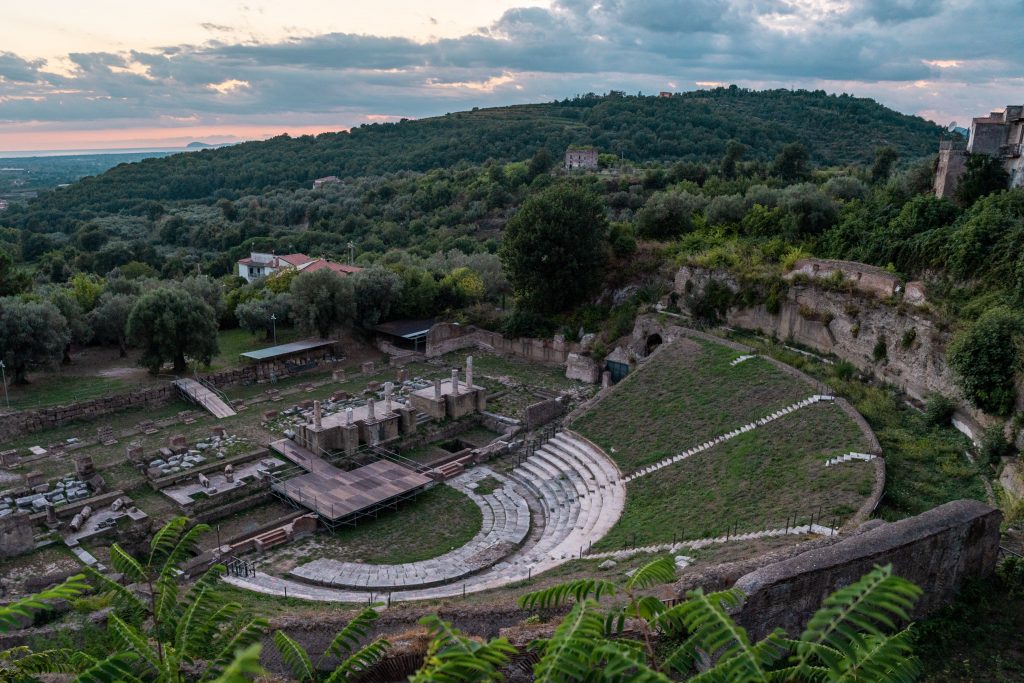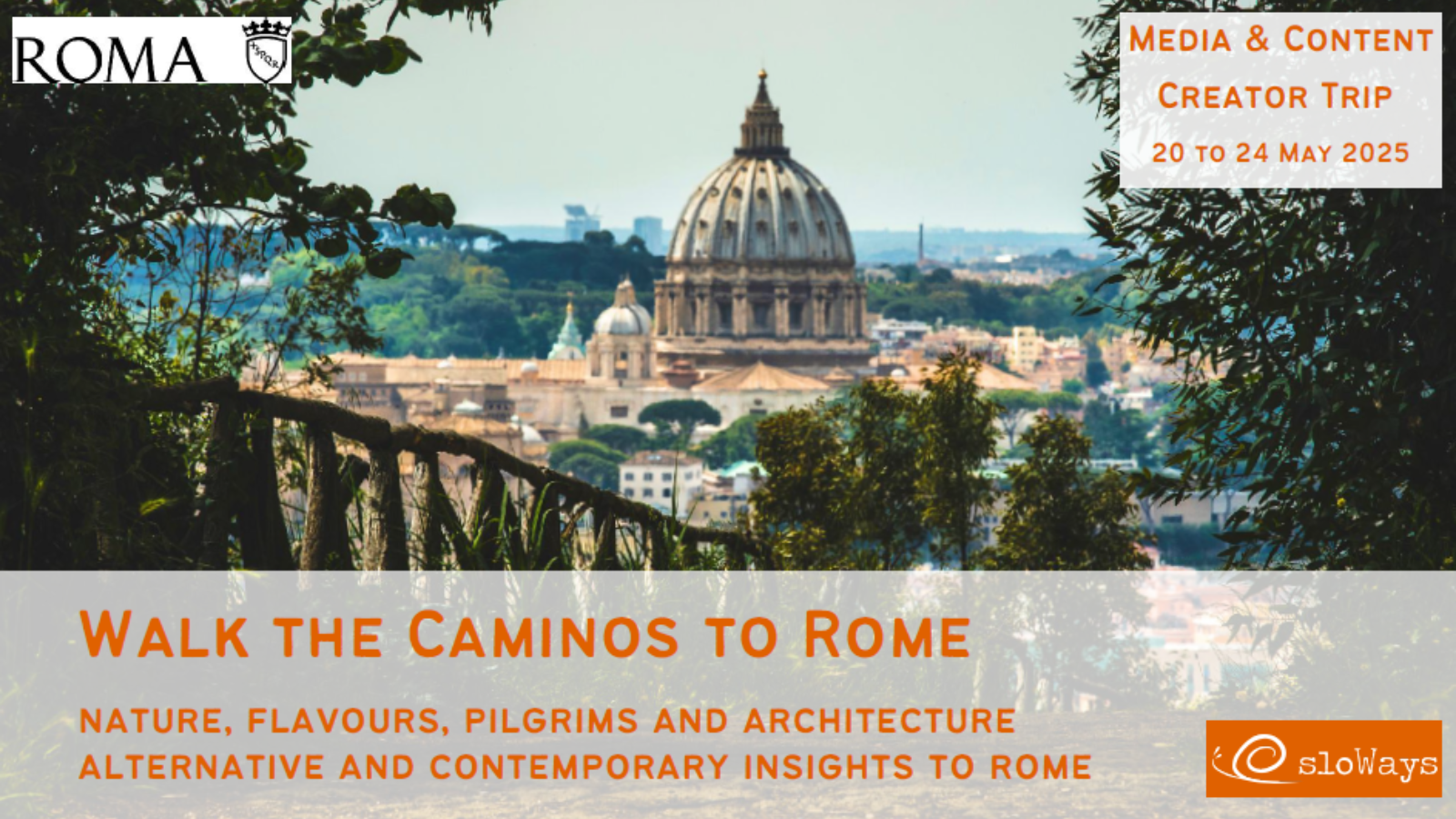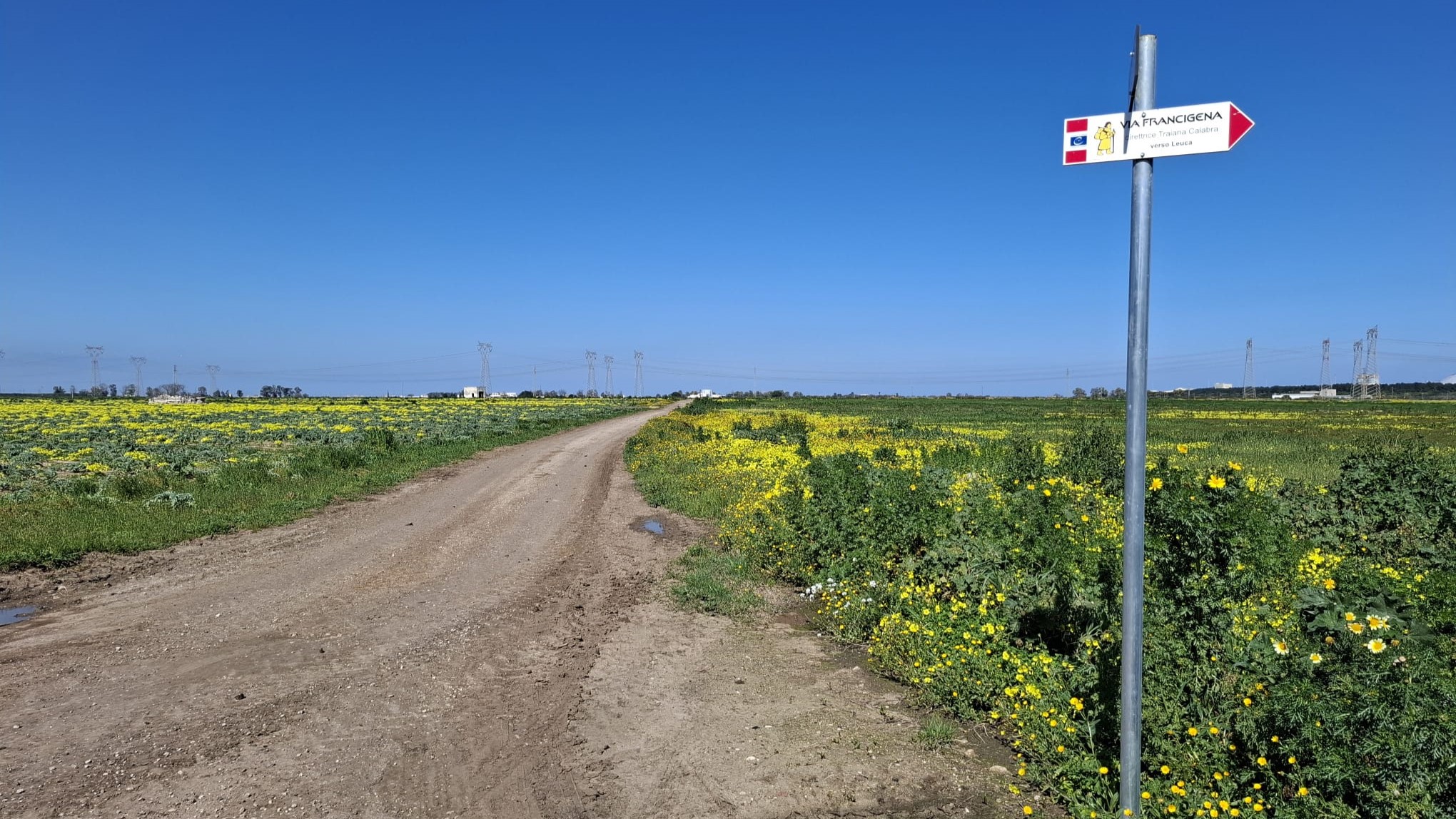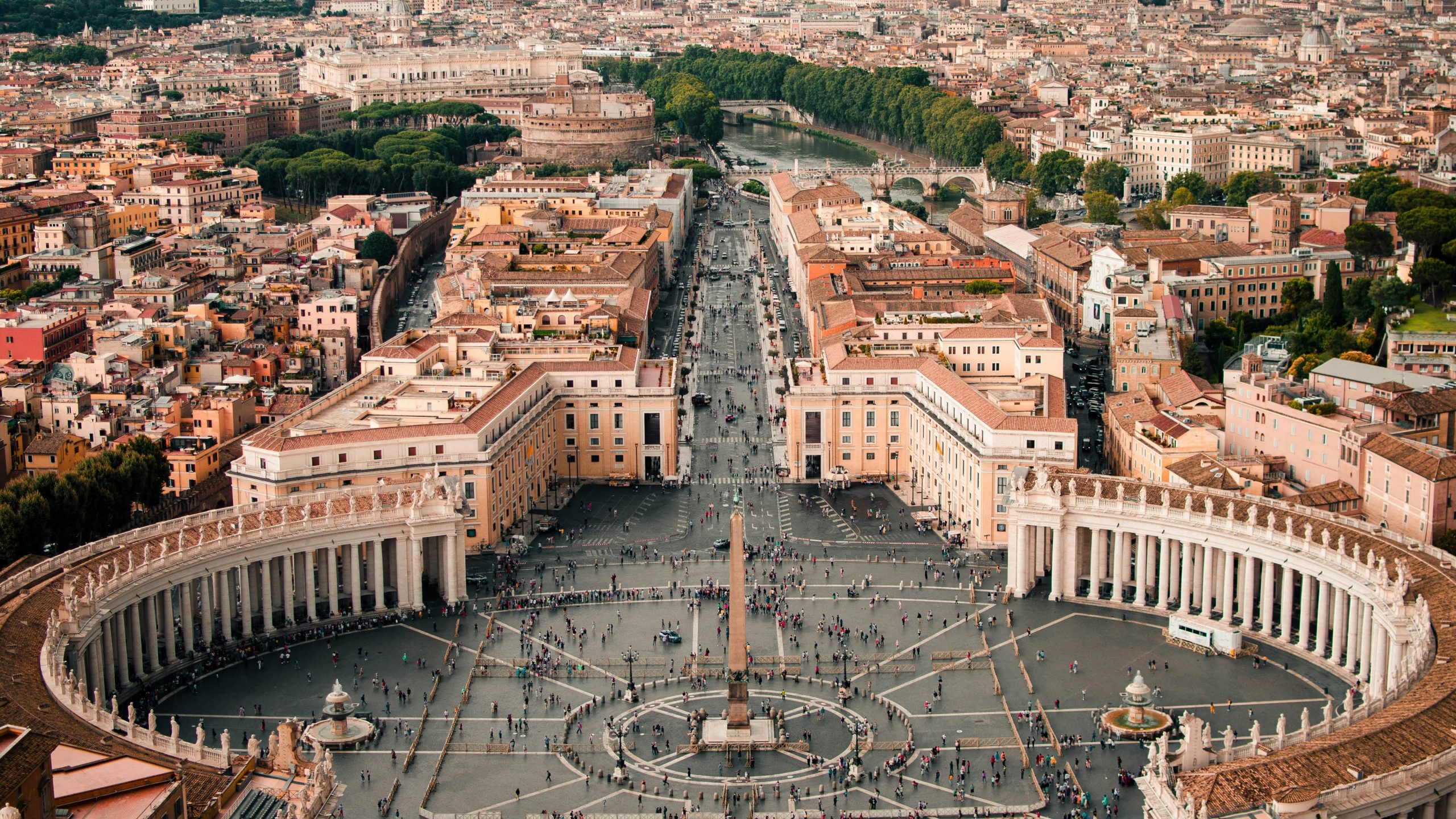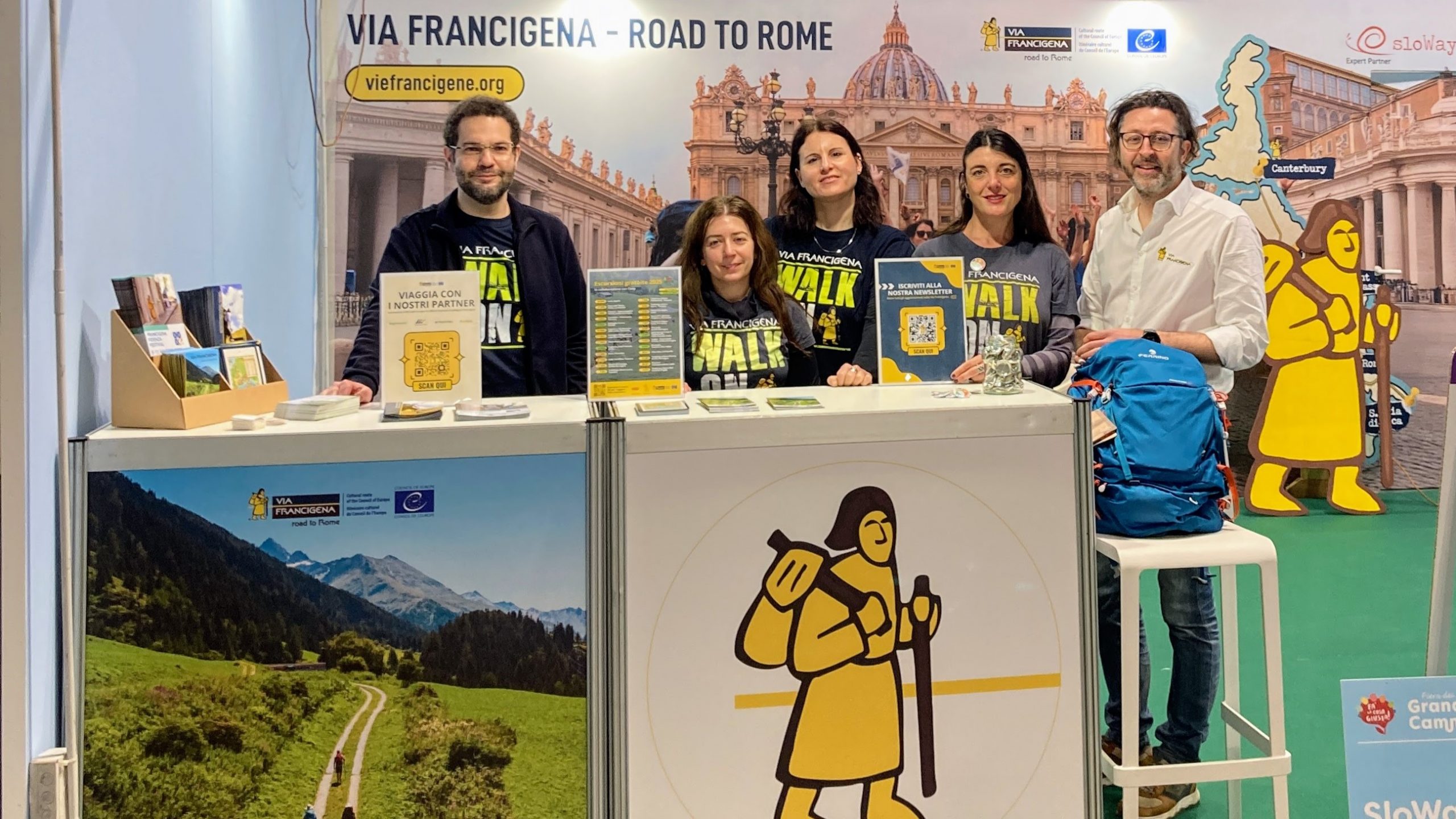The Via Francigena south of Rome is an extraordinary journey in time and space, allowing us to see historical memories from different periods juxtaposed among each other. In this article, we will present 12 unmissable places, presented in the order you will come across them as you travel along the route from Rome to the border with Campania.
1. The Regional Park of the Ancient Appian Way
The largest protected urban area in Europe and a green belt following the Regina Viarum, south of Rome. History and nature come together and create a unique landscape, containing remains of mausoleums, Roman villas and aqueducts.
2. Castel Gandolfo
A town famous for having been the summer home of various Popes for centuries. As well as admiring the wonderful panorama of Albano Lake, walkers can visit the gardens and the papal villas: unmissable places.
3. Nemi
Another village built in a beautiful panoramic location is Nemi, overlooking the volcanic lake that shares the same name. In the town, you can visit the ancient Temple of Diana Aricina and the Museum of Roman Ships, built in the 1830s to hold the two gigantic ships of Emperor Caligula (37-41 AD) that were recovered from the lake, unfortunately lost in a fire in 1944.
4. Cori
The town is a hub of historical and natural attractions: along the route, walkers will pass through the beautiful green space surrounding Giulianello Lake, and on arrival in the historical town centre, they can visit the Chapel of Santissima Annunziata, which holds one of the most important paintings in Lazio from the late-gothic period. They can also visit the Saint Oliva monumental park, where a medieval church incorporates the remains of an antique temple, a 14th century chapel featuring frescoes, a renaissance cloister and a convent.
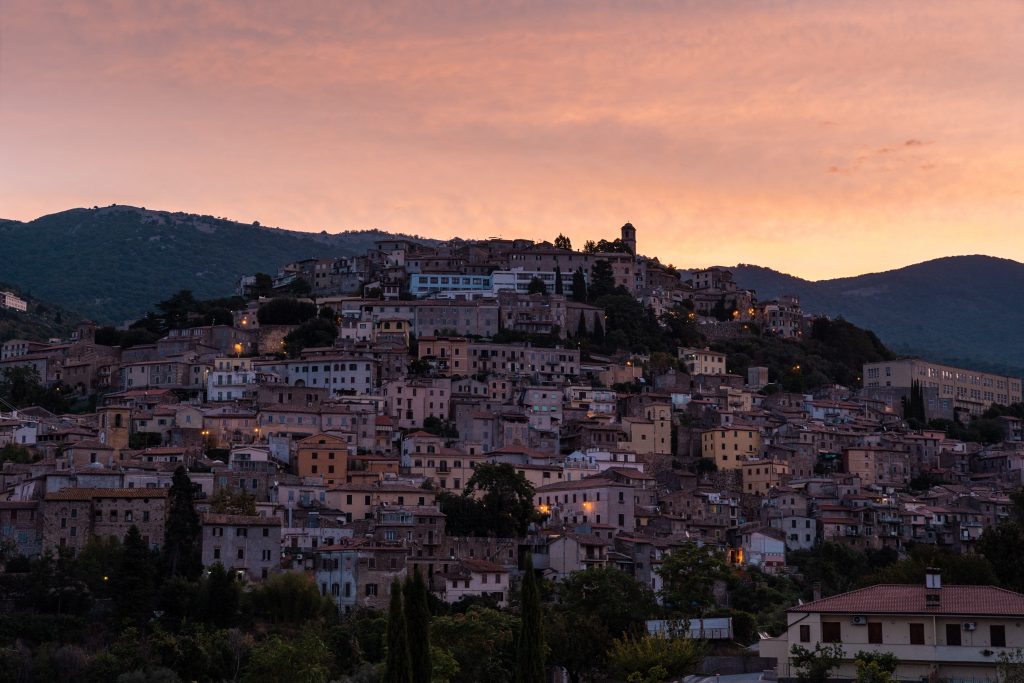
5. The Norba Archeological area
The area was founded in the 5th century BC, in an area dominating the entire Pontina plain. It had been destroyed in 81 BC, in an incident where the residents preferred to kill each other and set fire to their houses rather than let the area fall to enemy hands and leave them with something.
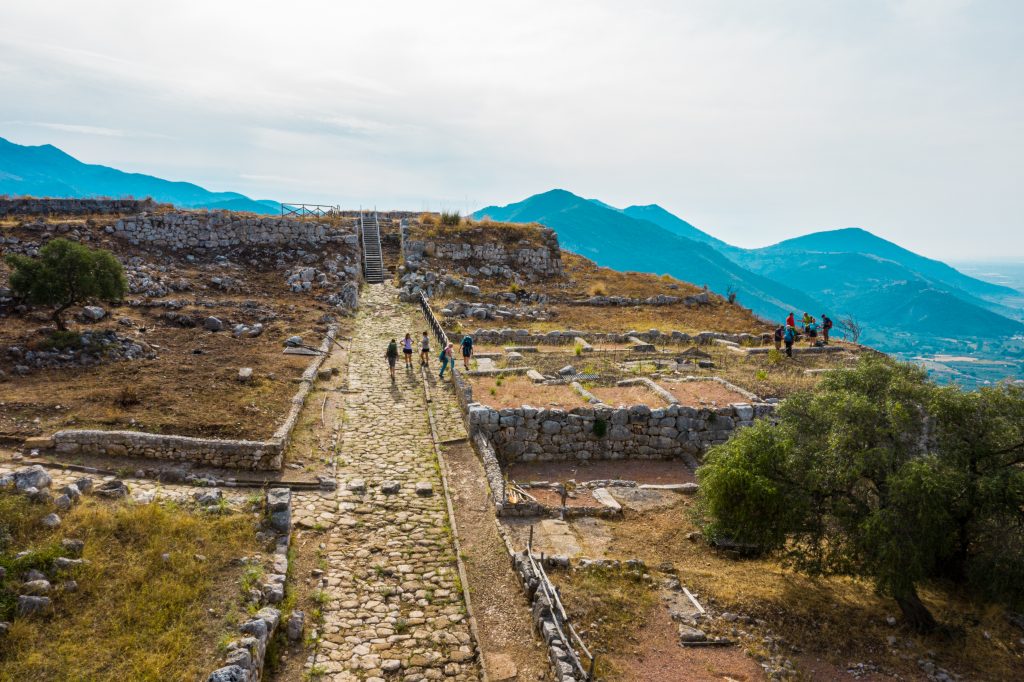
6. Sermoneta
Dominated by Caetani castle, it is another marvellous town along the Via Francigena in Southern Italy. Before taking on the climb towards the historical centre, you can visit the Valvisciolo abbey, one of the most impressive masterpieces in Romanic-Gothic-Cistercian style. At the foot of the town, the Ninfa Garden is worthy of a visit, a typical English garden constructed in the 1920s in the area occupied by the medieval town of Ninfa, of which today only some ruins remain.
7. Fossanova Abbey
The abbey is situated within the municipality of Priverno and is one of the oldest examples of Gothic-Cistercian art in Italy. The complex was completed at the end of the 12th century after transforming a pre-existing Benedictine monastery, and was later given over to the Monks of Burgundy guided by Saint Bernard of Clairvaux.
8. Terracina
The historical centre of Terracina is a place where the marks of Roman, medieval and modern history can all still be seen, such as the ancient Appian Way which passes through Piazza del Foro, and is still cobbled to this day. Further examples are the Roman Theatre, the Capitolium, the Cathedral of Saint Caesarius built on the ruins of a Roman temple, Castello Frangipane, Palazzo Braschi. The town is dominated by the Temple of Giove Anxur, built in the Roman era on Mount Saint’Angelo, in a beautiful position from which you can admire the beautiful panorama looking out over to Mount Circeo and to the Pontine islands.
9. Valley of Saint Andrew
One of the most suggestive parts of the ancient Appian Way south of Rome is through the Valley of Saint Andrew, between Fondi and Itri, forming a three-kilometre path parallel to the modern Via Appia. The Roman Road was built on the rocky side of the mountain, held up by strong walls up to 12m high, which date back to the third century BC, the era of Appio Claudio, the builder of the road.
10. Gaeta
Gaeta offers visitors a spectacular view from the historical centre and from the Angevin-Aragonese Castle, made up of two linked buildings that were built in two different historical periods. The lower building was built during the period of Angevin governance, and the higher building was ordered to be built by Sovrans during the reign of the Kingdom of Naples, part of the Aragonese dynasty. Before arriving in the town centre, the Via Francigena passes by Serapo Beach, from which you can see the Sanctuary of the Montagna Spaccata. The sanctuary was built in the year 930 by the Benedictine Fathers on the ruins of a Roman General’s villa.
11. Cicero’s tomb in Formia
Although around 1.5km from the Via Francigena, the tomb in Formia is worth visiting: it can be found along the Via Appia and is a mausoleum dating back to the Augustan era. It is where Cicero, the famous Roman politician and orator, is supposedly buried. Additionally, in the town hall building dating back to the 1700s, Formia plays host to the National Archeological Museum, which displays an impressive collection of excellent sculptures dating back to the period between the 1st century BC to the 1st century AD.
12. Minturno Archaeological Area
Before leaving the Lazio area, you cannot miss the Minturno Archaeological Area, an ancient port city that was part of the Pentapolis Aurunca, destroyed by the Romans in 314 BC and subsequently rebuilt. Next to the archaeological area, the bourbon bridge which crosses the Garigliano river was the first iron suspension bridge ever to be built in Italy, built between 1828 and 1832.
